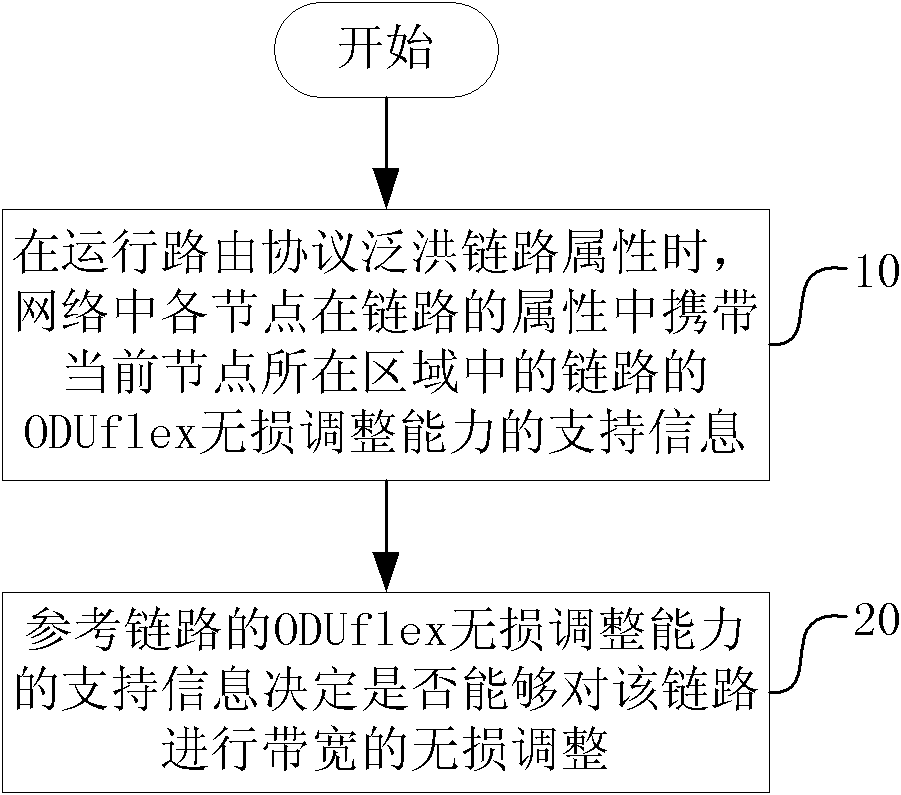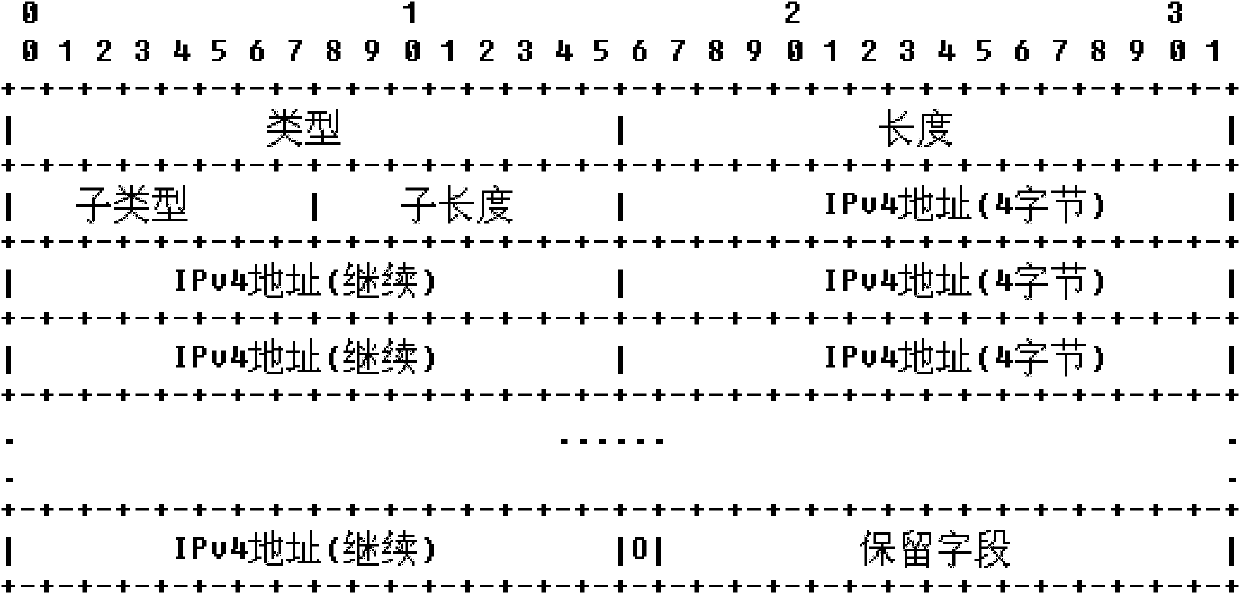ODYflex lossless regulation capacity route flooding method, device and node
A capability and node technology, applied in the field of devices and nodes, ODUflex non-destructive adjustment capability routing flooding method
- Summary
- Abstract
- Description
- Claims
- Application Information
AI Technical Summary
Problems solved by technology
Method used
Image
Examples
Embodiment 1
[0047] figure 2 It is a specific schematic diagram of the sub-TLV in the case that the link port information is an IPv4 address identifier, and the definitions of each field in the sub-TLV are as follows:
[0048] Type (Type) field (16 bits): describes the sub-TLV type. By carrying a fixed type value in the Type field, it is used to indicate that the type of this sub-TLV is to identify whether the link supports the ODUflex lossless adjustment capability.
[0049] Length (Length) field (16 bits): information about the length of the Value field. This includes the sum of the lengths of all IPv4 addresses on the corresponding link ports, the length of the identification bit information indicating whether the link supports the ODUflex lossless adjustment capability, and the length of reserved bits.
[0050] Sub-type (Sub-Type) field (8 bits): used to distinguish different identifier types of link ports, such as IPv4 address, IPv6 address, or interface identifier. The sub-Type h...
Embodiment 2
[0056] image 3 It is a specific schematic diagram of the sub-TLV in the case that the link port information is an IPv6 address identifier, and the definitions of each field in the sub-TLV are as follows:
[0057] Type (Type) field (16 bits): describes the sub-TLV type. The function and assignment are the same as the Type field in Embodiment 1.
[0058] Length (Length) field (16 bits): information about the length of the Value field. This includes the sum of the lengths of all IPv6 addresses on the corresponding link ports, plus the length of the identification bit information indicating whether the link supports the ODUflex lossless adjustment capability and the length of reserved bits.
[0059] Sub-type (Sub-Type) field (8bits): used to distinguish different identifier types of link ports, which is the same as the sub-Type field in Embodiment 1, where the sub-Type identifies the chain by information carrying a fixed type value The road port has the address type of IPv6. ...
Embodiment 3
[0066] Figure 4 It is a specific schematic diagram of the sub-TLV in the case that the link port information is an interface identifier. At this time, a certain link is uniquely identified through the combination of the Router Address (routing address) TLV and the sub-TLV. Router Address TLV can describe the address information of the advertising router, and is usually used as a loopback address. The definition of each field in sub-TLV is as follows:
[0067] Type (Type) field (16 bits): describes the sub-TLV type. The function and assignment are the same as the Type field in Embodiment 1.
[0068] Length (Length) field (16 bits): information about the length of the Value field. This includes the length of the interface identifier on the corresponding link port, plus the length of the identification bit information identifying whether the link supports the ODUflex lossless adjustment capability and the length of the reserved bit.
[0069] Sub-type (Sub-Type) field (8bits...
PUM
 Login to View More
Login to View More Abstract
Description
Claims
Application Information
 Login to View More
Login to View More - R&D
- Intellectual Property
- Life Sciences
- Materials
- Tech Scout
- Unparalleled Data Quality
- Higher Quality Content
- 60% Fewer Hallucinations
Browse by: Latest US Patents, China's latest patents, Technical Efficacy Thesaurus, Application Domain, Technology Topic, Popular Technical Reports.
© 2025 PatSnap. All rights reserved.Legal|Privacy policy|Modern Slavery Act Transparency Statement|Sitemap|About US| Contact US: help@patsnap.com



